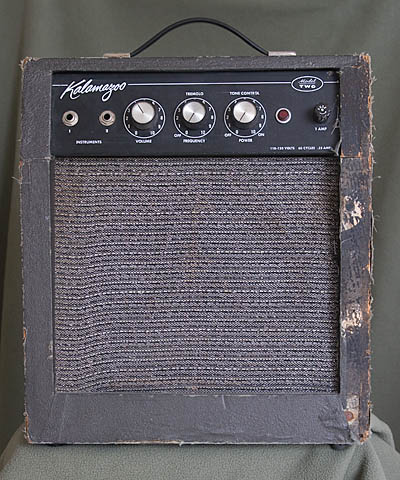I normally gig through one of the most coveted harp amps there is, a Sonny Jr. Avenger. But I wanted a smaller practice amp. I'm pretty handy with tools and a soldering iron, so I considered building a Fender Tweed Champ from a kit. It was going to set me back about $500 plus a lot of time, so I decided first to check with Sonny Jr. himself - the guy knows more about amps for harp than anyone else I've ever met. He said "Save your money and get yourself a Kalamazoo Model 2 off of eBay. Best little harp amp I ever heard." So I took his advice, and bought the amp you see pictured to the right. It has a typical Kalamazoo "patina". Fixed it up and you know what? Sonny Jr. was right! That was 20 years ago. Since then, I have rebuilt over 400 Kalamazoo Model 1 and Model 2 amplifiers. I know what they're supposed to sound like!
I'm happy to rebuild your amp(s). I know what they're supposed to sound like and have rebuilt over 300 of them. I charge $129 for the basic rebuild. That includes complete disassembly of the amp, cleaning and lubing the pots, cleaning and re-tensioning tube sockets, adding a 3-wire power cord, eliminating the "death cap", replacing the power filter supply capacitors, adding my front panel reinforcement mod, and replacing a few other minor components that sometimes need it. It doesn't cover major issues like blown speaker or transformers, bad pots, tubes — or tube sockets — but if the amp is working now those aren't an issue and they rarely, rarely are.
For an additional $59 I will install the line out option. (See below)
For an additional $59 I will chemically dry clean the grill cloth and re-dye the cabinet.
